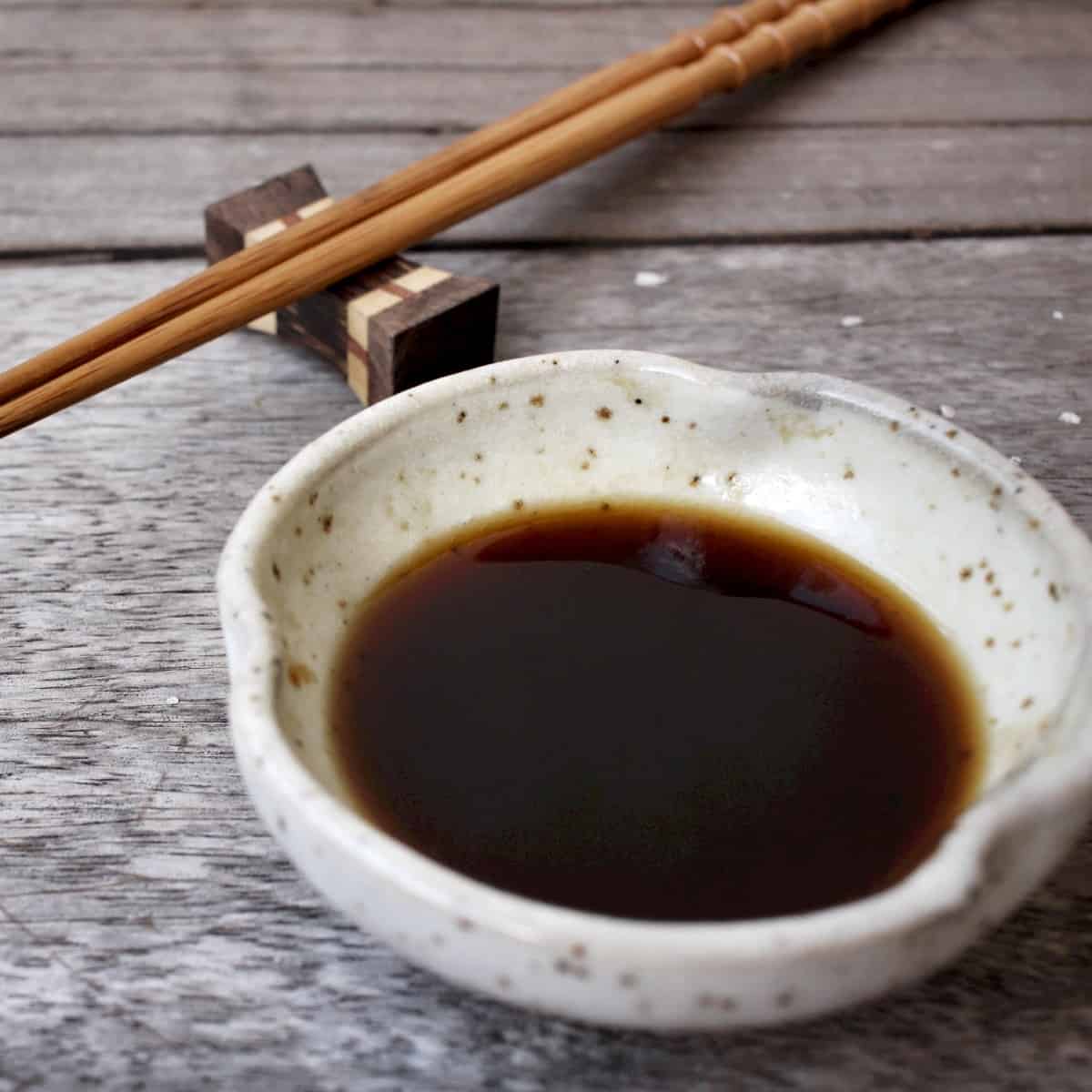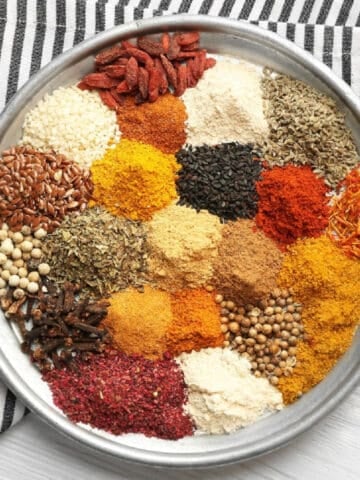How to make soy sauce less salty? Do you want to avoid your regular soy sauce tasting the same every time? Soy sauce is a staple/main ingredient in Asian cuisines, but it may be a red flag if you need to keep your salt intake low. Too much sodium in your diet makes you retain water and look bloated. It also contributes to high blood pressure, which can increase the risk of stroke.

Jump To
If you're craving something new and flavorful, in this blog post, it's time to discover the wonderful world of soy sauce. Whether your reason for reducing soy sauce saltiness is health-related or you wish to do it to align with your taste, several fixes are available. We'll discuss making soy sauce less salty to add a new twist and flavor to your favorite dish. We'll give a few simple methods and ingredients to reduce the saltiness and make a hearty and delicious outcome. So let's get started!
What causes soy sauce to be salty?
Soy sauce is made by fermenting soybeans with wheat and salt. Salt is crucial because it helps preserve the seasoning and enhances its flavor. During fermentation, microorganisms break down the proteins and carbohydrates in the soybeans and wheat, creating amino acids, including glutamic acid, which gives the sauce its umami flavor.
Salt plays a significant role in the fermentation process by helping to control the growth of microorganisms and preventing the growth of harmful bacteria. It also draws out the liquid from the soybeans and wheat, which helps to create the liquid base for the sauce. The salt concentration in soy sauce can vary, typically around 15-18%. This high salt concentration gives soy sauce its characteristic salty taste. It's worth noting that low-sodium soy sauce options are also available, which contain less salt than traditional soy sauce. These may use alternative ways to enhance the sauce's flavor. Read on:
Dilute
The best and easiest way to make soy sauce less salty is to dilute it with water. Mixing the sauce with some water will lower the sodium content but keep in mind that it will also weaken the savory flavor. Be careful to add only a little water as it will overly dilute the soy sauce, and you will have a useless condiment on your hands. If you do it right, diluting with water is an easy and quick way to remedy a salty soy sauce.
Add Another Flavor
Another simple way to make soy sauce less salty is to add another flavor to counteract the saltiness. There are several options available. What you choose depends on your specific preferences. Some popular choices include:
- Acid: One of the simplest ways to counteract the saltiness of soy sauce in a recipe is to add acidic ingredients to increase the umami flavor and balance the taste. Ingredients like tomatoes, lemon juice, lime juice, vinegar, miso paste, etc., could reduce the richness and saltiness of white soy sauce and provide a unique tang to your food.
- Sweetness: You can add a dash of sugar or honey(or molasses) to your soy sauce to balance the salty flavors. Adding just a bit of granulated sugar will help balance out the flavors in your dish and make it less salty. If you don't have coarse sugar on hand, try adding a little brown sugar instead (but only if there are no other flavors in your dish that would clash with its sweetness). The perfect ratio is about adding ¼ cup of sugar for every cup of soy sauce or one tablespoon of honey or molasses per 3 tablespoons of soy sauce.
- Fat: Adding some fat is another good option. A healthy glug of olive oil or butter can absorb some of the extra saltiness of the sauce.
Make a Bigger Batch
If you are making soy sauce with extra essential ingredients available, you can ensure it has less sodium by making a bigger batch. The key is to add in more of everything except salt and let it simmer until the different flavors mix correctly. Once you are finished, package the extra light soy sauce in meal-sized portions and freeze or refrigerate for later.
Substitute Lower Sodium Soy Sauce
If you find regular soy sauce too salty, you can choose low sodium soy sauce. This variety is easily available on the market and contains less salt. It can lower the high salt content (900mg) to 630mg per tablespoon of soy sauce, which is excellent. Moreover, if you wish to reduce the amount of salt further, you can do so by carefully diluting the sauce with water.
Reducing Soy Sauce Saltiness in Recipes
Reduce the soy sauce you use in recipes by 50% or more — try using only one tablespoon instead of 2 or 3 tablespoons. Or try using half as much soy sauce as called for in your recipe altogether; this will help reduce your sodium intake without compromising on flavor. Several options are available if you have already added this versatile condiment to your recipe and wish to reduce its salty effect. Here are some recommendations:
- Add Herbs and Spices: Using spices and herbs is another great way to minimize the salty effect of soy sauce in your food while bringing a different aroma and flavor. Herbs like rosemary, parsley, and basil mint can provide a vibrant flavor and freshness to your salty food while balancing the soy sauce’s salty taste. Spices like turmeric, coriander chili flakes, garlic, and ginger are the best way to create a satisfying and enticing flavor profile.
- Sweeten it Up: You can use natural sweeteners such as brown sugar, maple syrup, and honey to balance the saltiness of dark soy sauce in your Asian recipes. These sweet ingredients can provide an extra flavor and dimension to your Asian dishes and help balance the salty taste of soy sauce without being too cloying or sweet.
- Use Creamy Ingredients: You can neutralize the salty soy sauce flavor and add a layer of richness and creaminess to your food with creamy ingredients like yogurt, tahini, peanut butter, and coconut aminos. These ingredients can provide an excellent silky smooth texture that balances the sodium content and umami taste of soy sauce and enriches the salty dish.
Final Word
Soy sauce is salty by nature as a result of its fermentation process. So, no matter what you do, you can expect some saltiness in your food that comes with soy products. However, there are some ways to make soy sauce less salty to suit your preference. The above-listed are different ways to reduce the saltiness of soy sauce before or after adding it to your food.
Making soy sauce less salty is a great way to add a delicious and unique flavor to your favorite dishes. By adjusting the salt content and using the right ingredients, you can make a healthier and more flavorful version of this ingredient.
Several traditional soy sauce alternatives are available in grocery stores that provide a similar but less salty taste profile. With these tips and tricks, your food will always taste different!
If you've tried any of these methods, let me know how they worked in the comments section below!





Leave a Reply